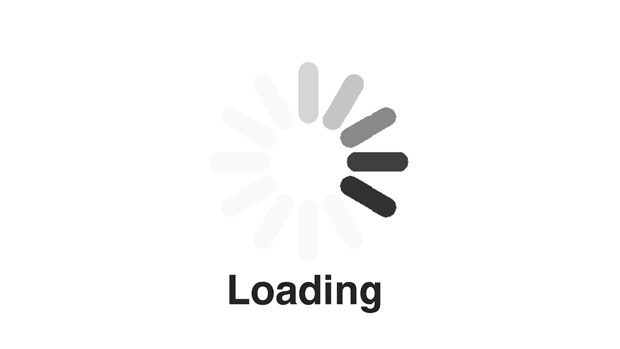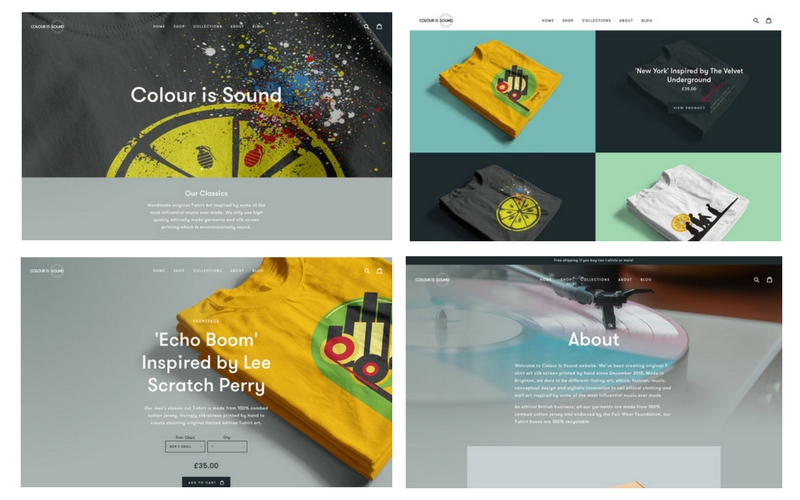When Is The Right Time For A Website Redesign?
Is my website out-of-date? Are customers being put off by the layout? Is my site taking too long to load?
These are tough questions to answer, especially if you’re not sure where to look or how to begin. In this post, we’ll uncover some of the common issues your website may be experiencing and how you can overcome them.
We’ll be looking at:
- Early website design.
- Identifying the issues with old or legacy websites.
- What good website design looks like.
If, by the end of this post, you realise you are experiencing some of the issues mentioned, well the time might be right for a website redesign.
Looking to the past.
When the Internet arrived in our house in the mid 90’s, it was a complete mystery to me. I couldn’t get my head around it; this mystical place in the sky where people shared information or easily downloaded music and videos - thanks Napster!
Some of my earliest memories of using the Internet involved using tools like AltaVista - remember that search engine - to look up websites, games and read articles for my homework.
Alta Vista search Engine circa 1999.
However, non-trustworthy sites have always been the plague of the Internet. In those heady days, eCommerce sites were few and far between and many people just didn’t trust them. Then, with the advent of websites like eBay and Amazon, people gradually became more comfortable with paying for products and services online.
Nonetheless, looking back those early websites, it’s very easy to picture slow loading, text heavy webpages with small pixelated graphics with an awful customer experience.
In 2016, I ask myself - has there been a dramatic change in website design? The answer of course is - Yes, a huge amount.
So, what’s the problem?
Since those early days, the Internet has grown into a sprawling, endless maze where people spend countless hours surfing online.
With this growth has come a massive increase in the number of businesses vying for users’ attention. Advertising spend on Google Adwords, Facebook, Twitter, etc. has skyrocketed. Data shows that online ad spend per user, grew by about 60% between 2000 and 2012 (from $67 to $108), and has more than tripled since 2002.
However, for small business owners, who may not be tech-savvy or design-minded, especially in the ‘Generation X’ or ‘Baby Boomer’ generation's, website design simply isn’t a priority. They often feel having a basic, text heavy website with lots of information will suffice in this day and age.
Your website is more than just an address. It’s your online business persona. A website, in most cases, is a customer's first interaction with your business, product or service.
A poorly designed or legacy website may be causing you more harm than good. Bad design, bad SEO tactics, bad page structure, for example, means your website will not rank highly on search engines. As a result, you’re missing out on visitors and potential customers. This leads me to the question:
How do you know if your website is out of date?
To answer this question, there are a few areas you can begin to look at. Below are some issues and challenges facing poorly designed or legacy websites.
Mobile Responsiveness
This is one of the single most important elements of a modern website. Why - 80% of mobile users' purchasing decisions are influenced by the mobile channel. Being mobile responsive allows your site to resize and re-adjust to any device it’s being viewed on. People are browsing and shopping on devices with different screen sizes. If you’re site doesn’t display properly or looks messy and convoluted, visitor will quickly leave and will not return.
A Desktop & Mobile Responsive Site
Old Keywords
Good practice suggests keeping track of your keywords. For example, with some websites offering technical content, words and phrases can quickly change meaning so it’s important you keep up with the times. Continually create fresh content with new terms and phrases which you’ve identified that appeal to your ideal customer and readers. This will keep your website interesting and relevant.
Out-Of-Date Content
Websites with lots of older content can be problematic. If content was added by numerous people, over a long period of time, a large collection of pages may have built up resulting in navigational issues. Users may have difficulty searching for and locating content they want to access. Older content may also be obsolete and no longer accurate. Regularly undertaking a content audit makes sure users are presented with correct information. Always showcase your business in its best light.
Loading Speeds
In today's world, webpage visitors have limited attention spans. Loading time is now a major factor contributing to page abandonment.
Some factors which can affect the loading speeds are large images and files, external embedded media, poor code, etc. so it’s crucial that your website is optimised. We live in an instant gratification society - so every second counts.
Non-existent Call-To-Actions
Call-to-actions or CTAs are the lifeblood of your website. You want people to visit your website and complete an action - buy a product, subscribe to a blog / newsletter, download content, etc. It’s crucial your CTAs stand out and clearly explain what the action will lead to. If your goal is to capture leads, it is vital that that you get this right.
What does a well designed website look like?
Modern websites have some fundamental elements which form the basis of good website design. Two areas I’m going focus on are ‘Usability’ and ‘Clean’ design.
Usability
“Don't make me think”
― Steve Krug
Steve Krug has written a fabulous book on usability and this is a great quote to work by. If you’ve created a website or any content that requires a user action, you need to ask yourself “Will a visitor know instinctively what to do next?”. If a customer has to think about it - you’ve lost them.
Usability is all about ‘ease of use’. As in web design and other sectors, such as software development, usability is centered around the idea of making the interface of a website or application more user-friendly.
Great usability allows current and potential customers achieve their objectives with minimal effort and maximum satisfaction.
A key element of usability is ‘learnability’. The goal with any interface is to design it so the user will not need instructions. The user should be able to easily navigate the screen and understand what each action will do.
By following some the design principles outlined below, your website can meet your visitors expectations and allow to achieve their goals.
With this in mind, it’s essential you present information - visuals, layout, copy, etc. - in a clear and concise way. Before a website is designed, it’s important to plan for usability and map out the user journey to optimise their experience.
Using wire-framing tools, like UXPin, Mockflow and more, you can begin the planning phrase and easily map out the steps required.
The benefits to a well designed, planned site include:
- Increased user satisfaction
- Increased goal completion (purchases, subscribers, downloads, etc.)
- Reduced recurring development costs
- Increase in returning customers.
Clean Design
‘Clean’ website design may sound a bit vague, but think of it as the overall objective of the design. Under this ‘Clean’ heading, I’m going to include sub elements such as Layout, Visuals and Typography. When these elements are combined correctly, they lead to a consistent, cohesive and ultimately, ‘clean’ website.
Your website is the face of your business, so it’s imperative you present yourself as professionally as possible. A ‘clean’ design is a combination of these different elements working together. By considering the layout, word spacing, images, typography, clear call-to-actions, etc. you will enhance the user experience while improving lead generation and sales.
Layout
The best website designs these days primarily use a grid layout. Using a grid layout allows for consistent straight lines and proper alignment. When visitors arrive on the site, they can be put off or distracted by overlapping text or images. Therefore, each section must be aligned correctly.
Images & Graphics
Your website is an extension of you and your brand. When a visitor lands on your page, what feeling or emotion do you want them to have? Images and graphics are a powerful emotional weapon and allows you to tell your story. Sandra Iakovleva, Content Marketing Manager at Depositphotos, sums this is up perfectly - “Envision the people you’d like to work with and the ones that will be interested in your product. You are designing and choosing visuals for them.”
Spacing
‘Clean’ websites are all about consistency. Every minute detail on your page is important, even down to letter and line spacing. Nobody likes reading text or viewing images that are crammed together. Viewers should be able to scan the page, quickly read the text and digest the key benefits and features.
Typography
This element may seem straightforward, but get your typography wrong and your bounce rate will soar. One problem we see over and over again is poorly selected fonts. This includes font sizes which are too big or small and over use of a typeface - read Jon Tan's excellent post on the difference between Fonts and Typeface. By following and implementing some simple tips, achieving the goal of having a clean and consistent website is possible.
Wrapping Up
By understanding how these key elements contribute to the overall look and feel of a website, you can begin to dissect your website and ask the question - “Do I need a redesign?”
Mobile users have become more sophisticated, experienced and demanding. They understand what a modern website looks like and the type of experience they expect.
If your website is stuck in the past or has some usability issues, then more than likely you’re leaving money on the table. When visitors land on your site, you have one shot - so you better make it count.
If you have any concerns about your website or feel it needs a freshening up, feel free to get in touch for a relaxed chat.







